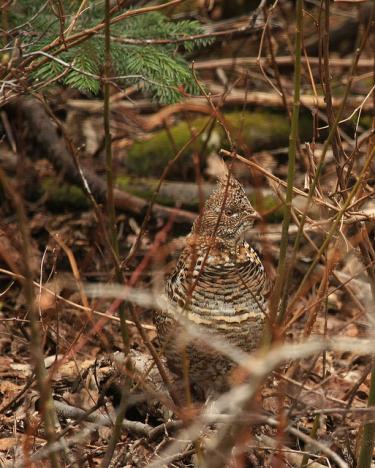Doing a Bird Count for Your Woods
Once you know how to attract and identify birds, you may want to keep track of the birds that spend time on your land. In addition helping you understand your woods better, you can add this information to the citizen bird-science efforts that happen annually and are sponsored by organizations like the Audubon Society and Cornell Lab of Ornithology. The figures that come from bird counts help scientists and bird conservation organizations to chart bird populations. They are also used by birders to get a sense of the prevalence of different bird species in their area.
A few tips for accurate bird counting
1. Write it down. It is always good to take a notebook when birding, but it is essential for doing accurate bird counts. Alternatively, you can work off of a photocopy of a local bird checklist. Or, you can make your own checklist—just make sure to include the date, time and location at the top of the page, then put the species name on the left, and the number of individuals seen in a column on the right. Here’s an example of a bird count checklist.
2. Note the location. You may also want to make a note of the location on your property where you saw the bird, or perhaps do separate counts for different habitat types like forest interior, field, edge habitat and wetlands. This will help you better understand which birds use which parts of your woods.
3. Stationary counting. At times you may want to stay in one place and count the birds you see over a period of time, especially if you are in a location where there are migrating birds flying overhead. If so, put intervals of time on your checklist, and record what you see every 15 minutes.
4. Count flocks in numerical groups. Counting flocks of birds can be daunting but there are some strategies that will help you get reasonably accurate counts. You can count groups of the same species of bird by 10, 50 or 100 individuals. Look to see how large a portion of the entire flock is taken up by your grouping, of say 10 birds. If you count 6 groupings of roughly 10, write down 60 for the flock. It may not be perfect, but it will give you a rough idea of the population.
Find out more
- Want to share your bird count with other birders as well as scientists and conservationists? Then consider joining eBirds, developed by the Cornell Lab of Ornithology and National Audubon Society, eBird provides rich data sources for basic information on bird abundance and distribution at a variety of spatial and temporal scales.
- Want to learn when birds are migrating in your region? Check out Cornell's Lab of Ornithology's BirdCast Forecasts.
- Take part in the Great Backyard Bird Count hosted by the Cornell Lab of Ornithology and National Audubon Society.
How can I get more tips?
It’s simple! Enter your email below.

